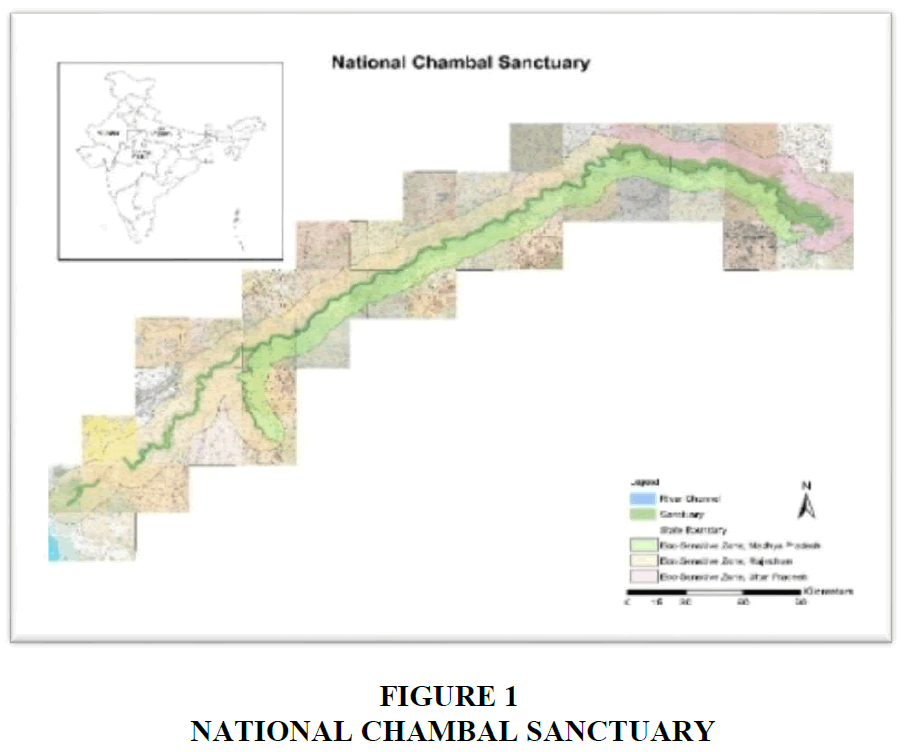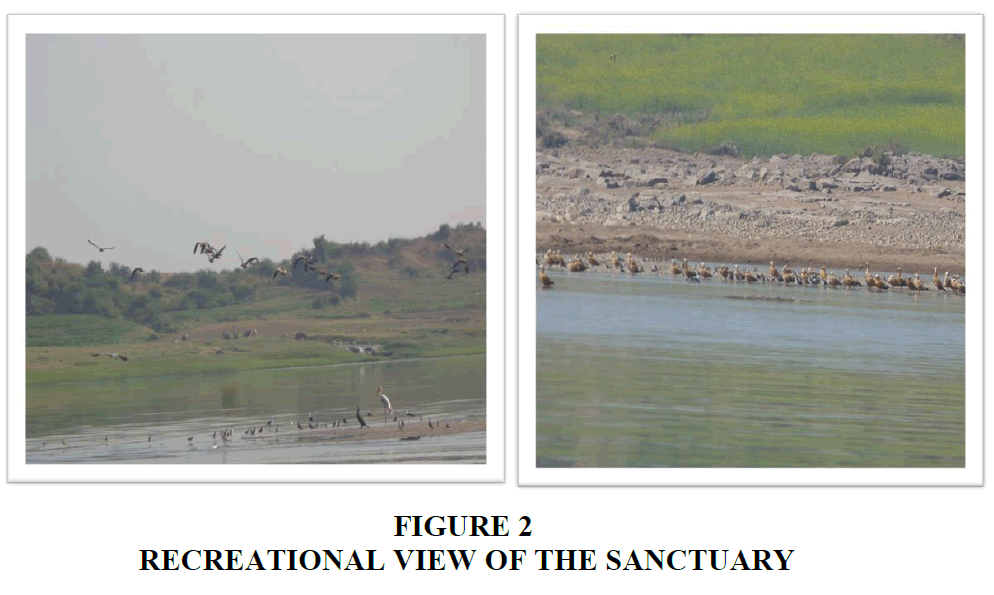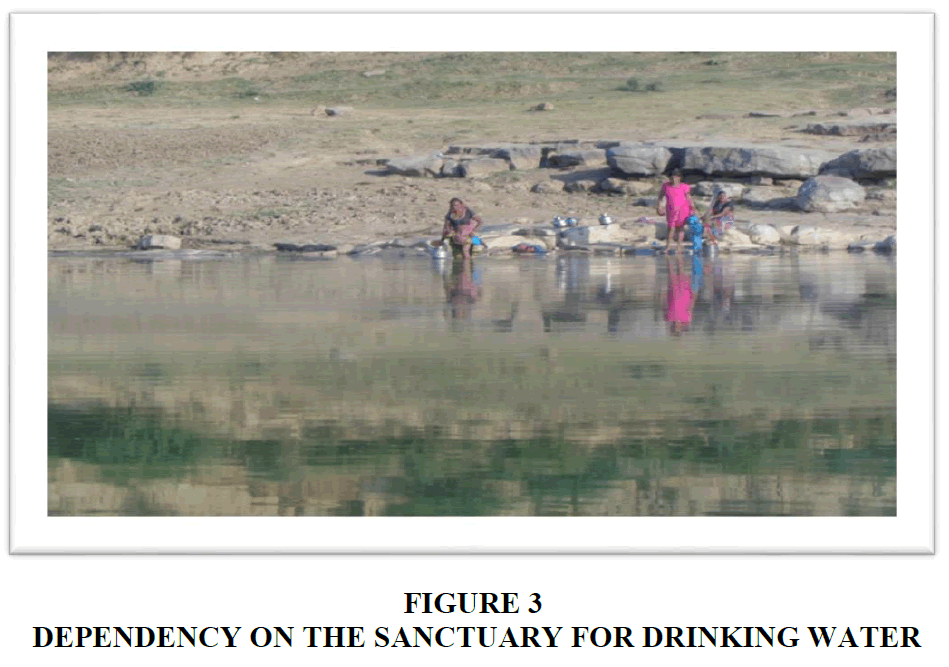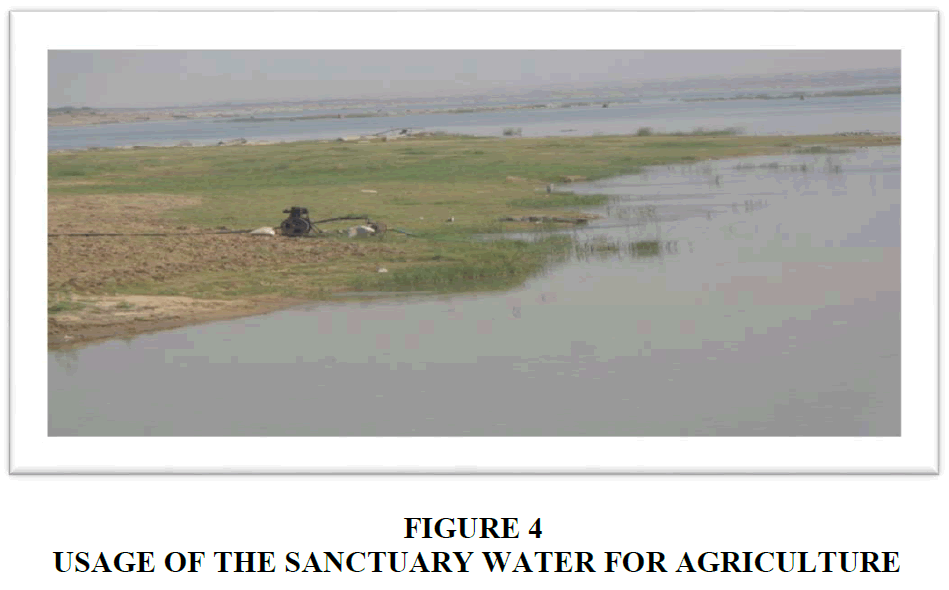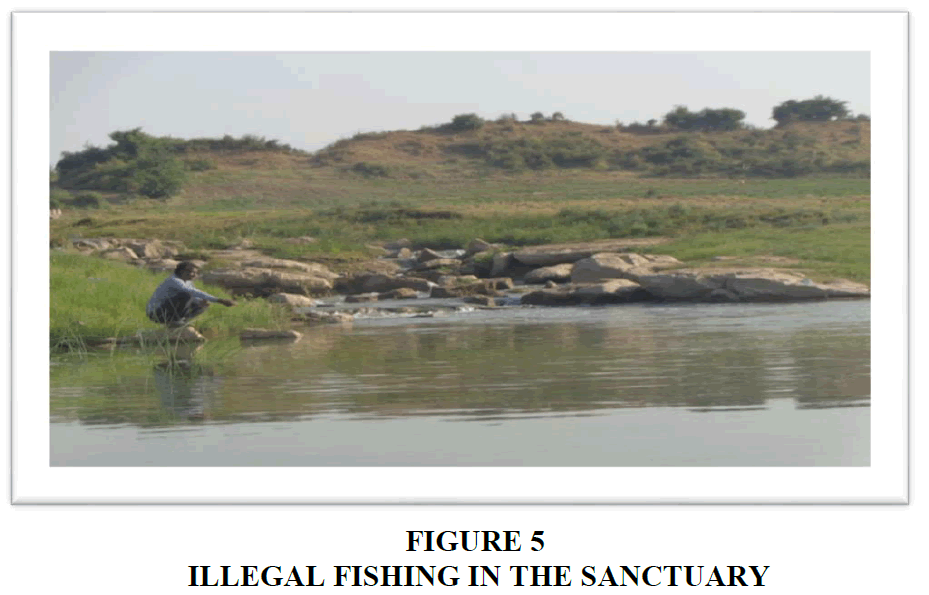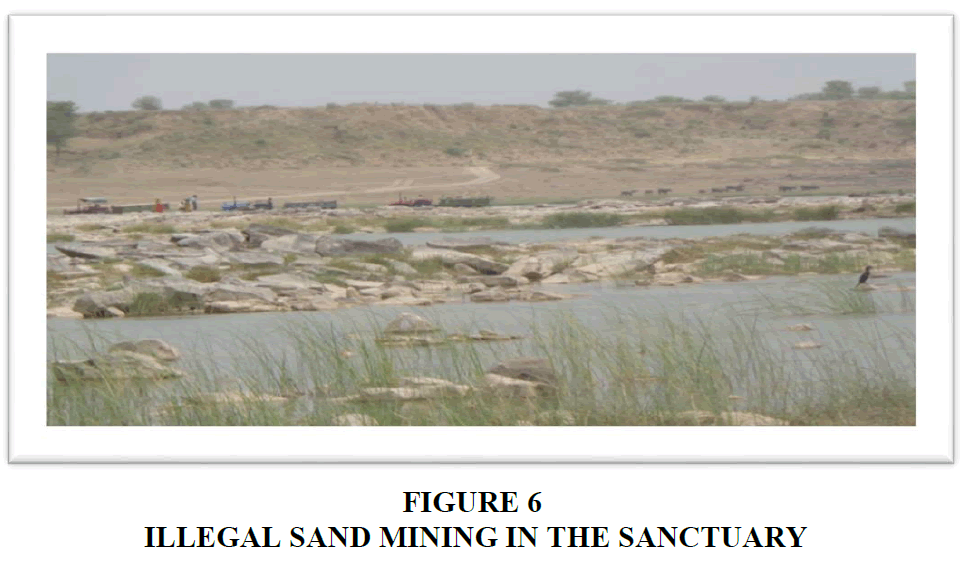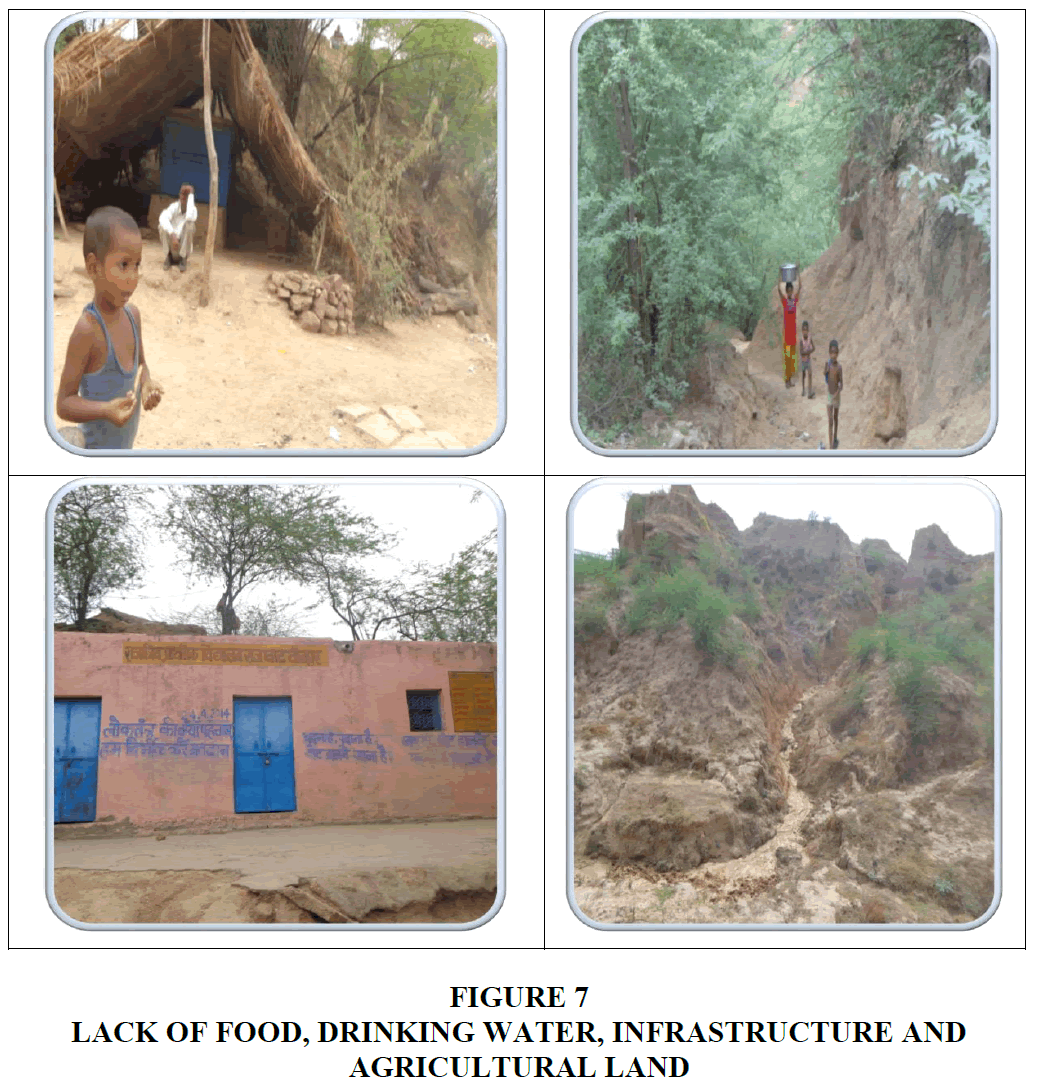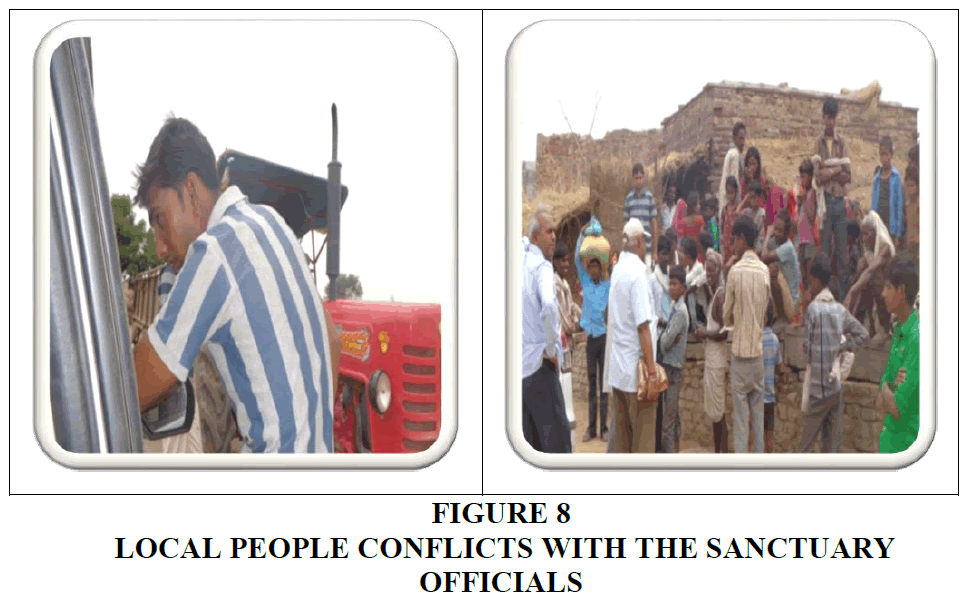Review Article: 2024 Vol: 28 Issue: 2
Assessment of Market Value of the Direct Benefits from a Protected Area: A Case of National Chambal Sanctuary, India
Nidhi Yadav, Indian Institute of Technology Bhubaneswar
Naresh Chandra Sahu, Indian Institute of Technology Bhubaneswar
Dukhabandhu Sahoo, Indian Institute of Technology Bhubaneswar
Meenakshi Gupta, Shri Mata Vaishno Devi University, Katra
Citation Information: Yadav, N., Chandra Sahu, N., Sahoo, D., & Gupta, M. (2024). Assessment of market value of the direct benefits from a protected area: a case of national chambal sanctuary, india. Academy of Marketing Studies Journal, 28(2), 1-19.
Abstract
Purpose - The purpose of this study is to assess the quantifiable advantages derived by local communities from the National Chambal Sanctuary, specifically about the utilisation of Non-timber forest products (NTFPs). Design/Methodology - The study employed a combination of focused group discussions and participatory observation methods to gather the necessary information from the neighbouring villages of the Sanctuary. The utilisation of the market price approach has been employed to ascertain the direct value of the Sanctuary by the local population. Findings - The findings show that local people derive advantages from the Sanctuary through the use of diverse NTFPs in terms of medicinal plants, vegetables, fruits, and other similar resources. This study utilises the market price technique and household survey data to arrive at the finding that, on average, households derive an annual value of INR 48755.79 from the Sanctuary. Practical Implications - Implementing a bottom-up approach that incorporates meaningful participation from local populations would be advantageous in promoting sustainable biodiversity management inside sanctuaries, protected areas, and parks. Governments must promote various employment generation activities in order to promote local livelihood participation in biodiversity conservation. Originality/Value – It is the first study to estimate the direct benefits of the Sanctuary to the local livelihood in terms of monetary terms that will be useful for policy implications in better management of the protected area. It will help to understand the various issues and challenges in the Sanctuary.
Keywords
Ecosystem Valuation; Market Price Method; National Chambal Sanctuary; Non-Timber Forest Products; Protected Area Management
Introduction
Human beings rely on the natural environment for their sustenance, both directly and indirectly, encompassing a range of essential requirements such as the provision of unpolluted air and water, opportunities for recreation, the procurement of animals and plants for sustenance, the cycling of carbon, the stoppage of soil erosion, the preservation of biological diversity, and the acquisition of energy (Shahi et.al., 2022). The significance of the earth, forest, and biodiversity for human existence has been underscored by Ansari et al. (2021) as a central focus of the sustainable development goals (SDG15). Many ecological advantages and services derived from nature are not subject to commercial trade still many local communities depend on Protected Areas (PAs) for their survival (Phuong & Thinh, 2022; Derebe, et al., 2023). Assigning a monetary value to these benefits becomes a complex task. Hence, effectively managing the excessive utilisation or exploitation of natural resources necessitates a comprehensive evaluation of their associated advantages (Yadav & Sahu, 2015). The ability to quantify these advantages in monetary units offers a means to assess the worth of natural resources, as well as the potential costs incurred by inaction in preventing environmental harm, such as soil erosion, air and water pollution, biodiversity decline, and ecological degradation.
To effectively manage protected areas, managers must strike a delicate balance and provide a framework for policies that can simultaneously fulfil several objectives (Yu, et al., 2022). Protected areas are rarely intentionally created with the primary objective of addressing poverty. However, it does not imply that PAs are detached from the principles of sustainable development and efforts to alleviate poverty (Shen et.al, 2022)
Consistent with the International Union for Conservation of Nature (IUCN, 2005), numerous PAs face challenges in effectively conserving biodiversity. These challenges mostly stem from inadequate and unsustainable financial support, as well as the failure to accomplish their intended development goals. Previous studies have mostly concentrated on exploring strategies to enhance the economic self-reliance of PAs and ensure their long-term viability and effective administration. Developing nations encounter the challenge of balancing the imperative for rapid economic growth with the need to address environmental conservation concerns. Based on the 2011 Census Report of India, it is observed that 68.85% of the nation's populace resides in rural regions, compared to 72.19% in the year 2001. This observation suggests a persistent upward trend in urbanisation inside India. The phenomenon is resulting in environmental damage. Numerous species are confronted with the imminent threat of extinction due to the diminishing levels of biodiversity and the contamination of the natural environment. India has adopted a policy of protected area management to address ecological degradation. This approach involves the conversion of forestry or riverfront regions with substantial biodiversity under the Wildlife Protection Act of 1972.
This study is intended mainly to investigate the livelihood support system offered by the National Chambal Sanctuary (hence referred to as the Sanctuary), one of the PAs in India and its impact on the local population. However, despite the rapid rate of progress, the rural Indian economy persists in its dependence on woody biomass as the predominant energy source. Furthermore, aside from fuelwood, the ravine section of the Sanctuary serves as a significant provider of various NTFPs that are collected. The acknowledgement of the crucial role that forests play in promoting livelihood security and poverty alleviation is widely recognised on a global scale. The environmental benefits of forests are of utmost importance in maintaining ecosystem stability at several scales, including local, national, and international levels, in addition to their economic advantages.
Governments do not fully realise the economic advantages derived from tourism or the non-market value associated with protected areas (PAs), which subsequently diminishes their incentive to allocate sufficient expenditures for the management of PAs (Dourojeanni, 2002). There is a necessity to identify supplementary financial resources to support the PAs' development and poverty reduction objectives. On the other hand, indigenous groups inhabiting forested areas depend on natural resources for their sustenance. Through the process of converting a forested region into a protected area, individuals are compelled to refrain from utilizing these natural resources for their primary purposes. Consequently, individuals experience a loss of their means of subsistence. Failure to conserve forestry resources may lead to the degradation of forests and the ecosystem. Within the confines of the Sanctuary, activities such as fishing, poaching, deforestation, land conversion for agricultural purposes, and the extraction of fuelwood for sustenance are strictly prohibited. The forest department of the respective states is making efforts to mitigate the excessive utilisation of natural resources and the influence on animals within the Sanctuary. However, the occurrence of sand mining and other illicit activities might be attributed to insufficient financial resources, inadequate staffing, limited knowledge, and prevailing poverty in the neighbouring areas.
The aforementioned facts underscore the imperative necessity of implementing sustainable management practices inside the Sanctuary to potentially alleviate the risks associated with deforestation and degradation. The objective of this study is to assess the immediate advantages of the Sanctuary by conducting a comprehensive survey in neighbouring villages that are near this designated conservation area. The study aims to investigate several key objectives. Firstly, it seeks to examine the contribution of the National Chambal Sanctuary in supporting the livelihood of the local community. Secondly, it aims to estimate the direct benefits that the local community receives in terms of NTFPs from the Sanctuary. Lastly, the study targets to find out the managerial issues and challenges associated with the implementation of sustainable development practices within the Sanctuary. The utilisation of this assessment has the potential to facilitate the advancement of the economic planning process and enhance the ability to secure financial backing for the preservation of the Sanctuary. The economic assessment of the advantages derived from forests plays a crucial role in constructing compelling arguments regarding the imperative to allocate financial resources towards the protection and sustainable management of forest ecosystems.
Following a concise introduction in section 1, the subsequent sections of the paper have been organized to achieve the purposes of the study. Section 2 provides a comprehensive overview of the existing literature on NTFPs and other pertinent valuation studies conducted in various PAs. Subsequently, the third section provides an account of the research area's geographical position, specifically focusing on the National Chambal Sanctuary. Section 4 of this research paper focuses on the methodology employed and the findings obtained from the study pertaining to the quantifiable advantages of the Sanctuary in monetary terms. Section 5 pertains to the discussion and conclusion.
Literature Review
Many protected areas in developing countries face obstacles in ecosystem management as a result of socioeconomic developmental issues that are endemic to these regions (Thapa et al., 2022). The imperative to prioritise rapid development and inclusive growth in a developing nation presents a challenge in allocating sufficient attention and resources towards ecosystem management and environmental conservation (Kamran et al., 2023). The notion of sustainable development, as described in the Broadlands report of 1987, suggests the importance of prioritising, “sustainable development that meets the requirements of the current generation while also considering the needs of future generations”.
The extraction of forestry products is prohibited within protected areas throughout several countries as a means of preserving and safeguarding natural ecosystems (Dudley & Phillips, 2006). However, the indigenous population, lacking alternative means of sustenance, inevitably relies on the natural environment in their vicinity to meet their fundamental requirements, including fuelwood and NTFPs (Dyck, 2022). In addition to these fundamental aspects, forests provide an assortment of ecological commodities and facilities that are not easily quantifiable within commercial frameworks. In the literature review, two prominent issues emerge. Firstly, it is imperative to study the potential of natural resources in lessening poverty and the extent to which they may achieve this objective. Furthermore, it is essential to integrate the objectives of conserving natural resources and alleviating poverty, as opposed to viewing them as conflicting aims.
The significance of NTFPs has been underscored in multiple research studies, highlighting their role in controlling poverty and providing sustenance for livelihoods while also promoting the protection of biodiversity (Kaoma & Schackleton, 2015). Several scholarly types of research have indicated that the collection of NTFPs by local communities has a crucial role in supporting their livelihood systems and contributing to the preservation of world biodiversity. The primary actors involved in the collection of NTFPs are often acknowledged to be rural gatherers, traders, as well as environmental protection and development institutes. The rural population is reliant on the primary sector, and forest dwellers are particularly reliant on forestry incomes for their means of subsistence. In community forests and tropical forests, NTFPs are an essential means of revenue. The attitude of locals towards forestry depends on the proximity of the forest to their domicile and the availability of ecological products.
As per the Food and Agricultural Report (FAO) 1997, around 150 varieties of NTFPs are traded worldwide, as well as nuts, honey, bamboo, medicinal plants, gum, and various types of oils. During the 1990s, NTFPs were viewed as a likely replacement for land conversion and deforestation. In addition, these methods have been regarded as a means of ecological forest management and poverty reduction.
According to Scherl et al. (2004), a significant problem lies in determining suitable functions for protected areas that will allow them to effectively uphold their essential role in biodiversity conservation, particularly in the face of growing pressures for development. In summary, PA are officially acknowledged for their role in biodiversity conservation, the safeguarding of natural ecosystems, and the preservation of ecological integrity. However, it is worth noting that certain public administrations (PAs) are also inclined to endorse and advance initiatives aimed at mitigating poverty (Scherl et al., 2004). Moreover, a study (Sunderlin et al., 2005) focused on sources of revenue, forestry, and protection in developing nations. A comparable study in Vietnam has found a steadiness between biodiversity conservation and the NTFPs collection for commercial purposes from forests. High rates of poverty and female dependency on NTFPs necessitate an incentive policy to reduce this reliance by encouraging participation in the forest management system (Quang & Anh, 2006).
Hussain and Badola (2010) conducted a valuation study of mangrove benefits to local living in Odisha's Bhitarkanika Conservation Area. This study quantifies the forestry and fishery products produced by mangrove forests, which provide numerous benefits to the local population. For this purpose, researchers surveyed 324 households from 36 localities within the protection zone using structured questionnaires. Wood, honey, firewood, and thatch grass are all forest products. They discovered that 14.2% of each household's fuel needs were met by the forests. Three criteria were used to evaluate the remaining fishery products: inshore, offshore, and mangrove forests' ability to support fish. Each household receives forest and marine products valued at 107 US dollars annually. The significant finding of their study is that mangrove forests contribute 14.5% of the overall income of 30% of adjacent families. This study emphasizes in great detail the significance of mangrove forests to the local people's way of life. In Odisha, coastal communities are vulnerable and risk-prone areas due to flooding and cyclones, mangrove forests offer shelter and sustainability to the local public.
While examining poverty reduction strategies in rural West African societies, Heubach et al. (2011) found that the impoverished rely on NTFPs more than those in higher income brackets. Saha & Sundriyal (2012) conducted an exhaustive study and identified 343 NTFPs used by local tribal peoples for various needs, including subsistence, medicinal requirements, fruits, vegetables, and building materials. It is also suggested that the state government can get the forest revenue from the NTFPs through an appropriate sustainable management plan and policy rules for community development. However, precise information regarding the extraction of NTFPs is lacking. This sector is not acknowledged for its contribution to the local community and biodiversity conservation. According to this study, NTFPs provide sufficient revenue to the state, local community, and tribal groups in North-East India, which contributes to forest resource conservation and management.
Kaoma and Shackleton (2015) conducted a study to determine the direct-use value of NTFPs, a significant source of income for the urban impoverished in South Africa. Scholars have conducted a survey of 450 households in three South African cities. In these cities, 33% of the income of the weakest migrants comes from urban NTFPs. It demonstrates the substantial contribution of NTFPs to the economies of developing nations. However, in protected areas, particularly national parks, locals do not have access to NTFPs. It poses the question of how to conserve natural resources in developing nations, where both conservation and poverty alleviation must be addressed.
Tieguhong et al. (2015) examined governance influences on the NTFPs value chain in Cameroon, Central Africa. CAFC emphasizes NTFPs' role in poverty alleviation and biodiversity protection. Their investigation shows that the NTFP trade was corrupted due to improper legal enforcement. Bribes made up 81% of 18,368 monetary transactions or 34% of trader costs. Their analysis reveals that better laws, policies, and practise support sustainable commerce and livelihood. Due to power concentration, developing countries have income disparity, which hinders natural resource development and conservation.
Few studies have found that systematized collecting NTFPs may contribute to sustainable development by giving local people revenue and value for environmental goods and services. It encourages later environmental preservation. Local community involvement in protected area management is the main ecological protection method in PAs (Zhang et al., 2020). In developing nations, individuals residing in rural areas are predominantly engaged in primary industries, including agriculture, fishing, and the gathering of NTFPs, to sustain their livelihoods. In developing nations, individuals residing in rural areas are predominantly engaged in primary sectors, namely agriculture, fishing, and the gathering of NTFPs, to sustain their livelihoods (Wiebe et al., 2022). Bachi & Carvalho (2023) suggested the collection of NTFPs not only promotes community tourism but also promotes socio-diversity.
However, it is worth noting that environmental resources and forests are being rapidly exploited to facilitate swift growth, resulting in significant environmental deterioration. Consequently, several forests have undergone conversion into protected areas, with the primary objective of safeguarding the environment and promoting biodiversity conservation on a significant scale. However, the regulations governing protected areas impose limitations on the local population's ability to exploit natural resources, which often serve as a primary means of sustenance for impoverished communities. Therefore, the execution of environmental conservation policy must not disproportionately burden individuals from low-income backgrounds. Hence, several scholarly investigations have established a correlation between poverty and protected areas. To effectively meet the dual objectives of poverty lessening and environmental protection, it is imperative to approach the management of protected areas practically and appropriately.
Study Area
The Chambal River, originating from the Vindhya hill range in the state of Madhya Pradesh, and converges with the Yamuna River near Etawah, Uttar Pradesh, is characterized by its cleanliness. The Chambal River exhibits an average width measuring 400 meters and a depth of 26 meters (Figure 1).
The National Chambal Sanctuary (hereafter referred to as the Sanctuary), encompasses a 600-kilometer segment of the Chambal River, extending from the Jawahar Sagar Dam to Pachnada. The establishment of the National Chambal Sanctuary occurred within a significant arc of the Chambal River, including an approximate area of 1800 square kilometres spanning three states (Yadav et.al, 2016). Uttar Pradesh was the initial state to enact the policy in 1979, succeeded by Madhya Pradesh in 1982, and the last by Rajasthan in 1983. The aforementioned area represents India's singular tristate riverine protected region (Yadav, et al., 2022). The Sanctuary is situated along the Chambal River, which traverses three states. There exist various management plans across three states. An integrated management strategy is in place to effectively oversee the operation of the Sanctuary.
However, the question of coordination in management among the states remains a matter of concern. The Sanctuary serves as a habitat for various species of endangered wildlife, including the gharial, crocodile, Indian skimmer, dolphin, migrating birds, turtles, and Gangetic dolphins (Figure 2).
The local community exerts pressure on the Sanctuary by utilizing the river water for various purposes, including drinking (Figure 3) and irrigation (Figure 4). However, this value is difficult to measure in monetary terms.
The over-utilization of the Sanctuary poses challenges to the local fauna and flora, particularly the unauthorized fishing activities (Figures 5 & 6) and extraction of sand (Figure 7), which adversely impact the endangered species.
The Wildlife Sanctuary is a highly significant conservation area that harbours a diverse range of endangered wildlife species, necessitating the provision of alternative means of subsistence for the local population.
To achieve sustainable management, it is imperative to address the additional socio-economic challenges faced by The Sanctuary. The ancillary villages around the Sanctuary in the Rajasthan region of Dholpur and Sawai Madhopur exhibit many socio-economic challenges, including poverty, inadequate infrastructure, limited agricultural space, and insufficient access to food and shelter.
The presented data indicates that the Sanctuary serves not only as a habitat for endangered animals but also offers economic support to the surrounding community.
Research Design
The quantification of the immediate advantages that NTFPs and other products offer to the local population has been conducted through the use of market prices as a means to determine their use value followed by the market price method. The researchers employed a judgemental sampling technique to identify families residing in the three states that share a border with the Sanctuary. The National Chambal Sanctuary encompasses multiple districts across three states within India. The aforementioned districts include Etawah and Agra in the state of Uttar Pradesh, Bhind, Sheopur, and Morena in Madhya Pradesh, and Kota, Bundi, Karauli, Dhaulpur, and Sawai Madhopur in Rajasthan. Uttar Pradesh (UP) is home to a total of 275 villages, while Madhya Pradesh (MP) has 170 villages, and Rajasthan has 349 villages near the Sanctuary. A selection process was conducted to identify villages within a 1-2-kilometre radius of the Sanctuary for inclusion in the study. Specifically, 12 villages from Uttar Pradesh, 9 villages from Madhya Pradesh, and 18 villages from Rajasthan were chosen, representing five percent of the total villages in each respective state.
Moreover, it is worth noting that there exists significant heterogeneity within the villages concerning the socio-economic standing of the households. Hence, it was necessary to consider these variables when analysing the sample houses. Upon careful consideration of these factors, the stratified sampling method was employed to choose the households for the sample. The families residing in each hamlet were categorized into four distinct strata based on a social variable, namely, Caste. In rural areas, the caste system was predominantly characterized by four distinct groups, including the General Caste (GEN), Other Backward Caste (OBC), Scheduled Caste (SC), and Scheduled Tribe (ST). Subsequently, a substratum was established inside each stratum based on the income level of the households, comprising five distinct levels. One household was chosen from each stratum of the substrata. Therefore, a total of 780 sample households have been selected, with 20 households picked from each of the 39 sample villages.
A well-planned survey schedule was developed to systematically gather data from the selected households by method of visiting each household's doorstep. Before the commencement of data collection, a preliminary survey was done as a pilot study. Subsequently, the identified deficiencies in the questionnaire were rectified and integrated accordingly. The survey encompassed four distinct aspects, including the social profile, economic profile, impacts on the Sanctuary ecology, and reliance on the Sanctuary. There has been considerable inquiry and discourse surrounding a range of concerns about fishing, mining, and wildlife, as well as the potential advantages or disadvantages associated with the Sanctuary. Following the data-gathering process, a thorough cleaning procedure was conducted, resulting in the identification of 643 sample households that met the criteria for inclusion in the analysis.
In this way, the dataset was collected using information gathered from local leaders, educators, and representatives of the village council during 2018-2019. The mean age of the participants was 45.18 years. Among the entirety of participants, 621 individuals (96.6%) identified as male, while 22 individuals (3.4%) identified as female. The sample consists of individuals with an age range spanning from 18 to 85 years, with an average age of 45.29 years. Table 1 presents several socioeconomic features of the local people.
| Table 1 Socio-Economic Characteristics of Sample Households | ||
| Households Characteristics | Mean | Std. Deviation |
| Age (Yrs) | 45.29 | 12.950 |
| Family Size | 5.59 | 1.560 |
| Education | 5.16 | 4.074 |
| Annual Household Income (in Indian Rupees (INR)) | 76304.51 | 84667.410 |
| Number of cattle | 3.26 | 4.415 |
| Land size | 1.37 | 1.729 |
| Distance from the Sanctuary (in Km) | 1.47 | 0.890 |
The average household size was 5.59 people, ranging from 2 to 9. The average annual household income of the sample is INR 76,304.51, with a range of INR 8,400 to INR 600,000. Seven percent of the sample size of 643 households lacked the ration card, while 72.5% had an Above Poverty Line (APL) card. The remaining 121 (18.8%) households had BPL cards, while eleven (1.7%) sample households had Antyodaya cards (It is issued to those households which fall under the 'poorest of poor' category). During the discussion with household chiefs, it was discovered that despite people's poverty, they had been issued an APL card and were therefore ineligible for government assistance. Few individuals lacked identification due to administrative issues. About 285 (44.3%) people had kutcha houses, 230 (35.8%) pucca houses, 125 (19.4%) semi-pucca houses, and 3 (0.5%) tin-sheds, according to the data on the housing conditions of the population. 437 (68%) of the sampled households had an electricity connection, compared to 206 (32%) that did not. The result of the study in terms of direct benefits has been discussed in the following section.
Results of the Study
The majority of village households rely on agricultural and manual labour for their livelihoods. Households and farmers use the Sanctuary's water for agricultural purposes and imbibing. The flora in the ravines is a tropical dry scrub forest, with Cordia myxa, Gardenia turgid, Azadirachta indica, Stredblus asper, Dalbergia sissoo, Acacia Arabica, and Prosopis juliflora as the dominant tree species. Few forest products have been evaluated, indicating the direct value (INR) of the Sanctuary (Table 2).
| Table 2 Estimation of Direct Benefits to the Local People in Terms of NTFPS from Sanctuary Region | ||
| NTFPs | Mean quantity in kg/number (per household annually) | The monetary value in INR (per household annually) |
| Bahera (Terminalia billerica) | 12.060 | 1809.00 |
| Amla (Emblica officinalis) | 25.427 | 2161.27 |
| Neem (Azadirachta indica) | 279.202 | 1044.21 |
| Bael (Aegle marmelos) | 25.647 | 1282.33 |
| Mahua (Madhulka indica)mahu | 30.367 | 2004.20 |
| Gugal (Commiphora wightii) | 10.213 | 6128.00 |
| Spiky Indian Gourd (Kakora) | 47.188 | 3775.07 |
| Cordia (Tenti) | 44.500 | 6230.00 |
| Kunduru (Coccinia grandis) | 42.490 | 1699.60 |
| Karela (Bitter gourd) | 32.203 | 1288.13 |
| Jamun (Suzygium cumini) | 40.392 | 3473.68 |
| Kaitha (Feronia limonia) | 22.782 | 1822.53 |
| Kathal (Artcarpus heterophyllus) | 24.982 | 1249.08 |
| Lemon | 15.680 | 784.00 |
| Ber (Indian Jujube) | 32.455 | 1622.75 |
| Mango | 37.312 | 1567.09 |
| Thatches | 24.555 | 1227.75 |
| Fuelwood | 201.210 | 804.84 |
| Honey | 6.963 | 2785.33 |
| Bargad (Ficus bengalensis) | 365.667 | 365.67 |
| Palash or Dhak (flame of the forest /Butea monosperma) | 190.363 | 190.36 |
| Bamboo | 40.713 | 3664.20 |
| Grazing | 10.577 | 1057.67 |
| Labera (cordia dichotoma cordia myxa) | 10.272 | 719.02 |
| Total | 48755.79 | |
It has been determined that tropical forest products contribute approximately 30.14 percent of the average annual income of local households. Locals collect food items such as honey, thorny Indian gourd, Cordia, coccidia Grandis, and bitter gourd near the Sanctuary. People gather NTFPs in addition to food to fulfil their daily needs. By adding the average annual monetary value of all products extracted by households from the Sanctuary, the annual average economic value per household has been calculated to be INR 48,755.79. In rural areas, over 80% of the population relies on fuelwood and bovine dung. Only 10% of the educated and government-employed population is dependent on fuelwood. Due to the absence of a direct market, neither drinking water nor agricultural water was quantified in the study. This study concludes that the direct use-value of the Sanctuary is INR 48755.79 per household annually based on the participant observation method and door-to-door survey.
Discussion
This study assesses the direct benefits of NTFPs to the local public in the National Chambal Sanctuary. It indicates the immense value of the Sanctuary from the local households' perspective. Due to the impossibility of quantifying water and its market prices, the study did not quantify the consumption of potable and agricultural water. To protect endangered species such as crocodiles, gharials, and turtles, which deposit their eggs in the sand, sand mining is prohibited in the Sanctuary. However, sand mining in the Chambal River, notably during the ongoing gharial breeding season, poses a threat to the species' reproduction. Nevertheless, it came to light during the field survey that sand mining was occurring despite the protection of Sanctuary officials in Rajasthan and MP border near Karuali Districts due to a lack of personnel and destitution in the surrounding areas.
According to the Government of M.P., "Sand has become a scarce commodity, resulting in a critical situation and a conflict between the Sanctuary and the local population" (Saxena, 2015). As a result of not permitting sand mining, forest department employees have come under attack from the sand mafia. Still, sand mining occurs daily. According to the mining department, "business is valued at approximately INR 10 billion, and the government is losing out on royalties" (Saxena, 2015). Based on economic considerations and wildlife preservation, there is a conflict between wildlife experts and the government (Figure 8). Due to the Sanctuary's prohibition on sand mining and fishing, their value has not been accounted for. Along with that, the water for drinking purposes and irrigation has not been accounted for due to its free good nature in the Chambal region that is difficult to measure. It adds to the limitation of the study.
Conclusion
This study draws its conclusions by employing the field visit and participation observation method. It determines that the annual household use value, from the standpoint of meeting necessities, amounts to INR 48755.79. In the context of ecosystem management, it is recommended that the forest departments of the respective states associated with the Sanctuary undertake the development of employment-generating initiatives. These initiatives may include the establishment of small-scale cottage businesses, the promotion of agro-wood handicrafts, the implementation of plantation projects, and the facilitation of self-help organizations.
Hence, the government must devise and execute efficacious policies aimed at resolving the conflict between the local populace and the management of the Sanctuary. This can be achieved by providing opportunities for community engagement in the governance and advancement of the Sanctuary. There exists a pressing necessity to identify alternative financial resources that can effectively sustain the efforts towards supporting (PAs, as well as facilitating their growth and contributing to poverty decrease purposes. Finding effective strategies to address the many concerns and challenges encountered by PA managers can prove to be advantageous. To foster sustainable development, it is essential to adhere together a top-down and bottom-up method, while ensuring meaningful engagement of local people.
References
Ansari, N. A., Agus, C., & Nunoo, E. K. (2021). SDG15–Life on Land: Towards Effective Biodiversity Management. Emerald Group Publishing.
Indexed at, Google Scholar, Cross Ref
Bachi, L., & Carvalho-Ribeiro, S. (2023). Markets for Non-Timber Forest Products (NTFPs): The Role of Community-Based Tourism (CBT) in Enhancing Brazil’s Sociobiodiversity. Forests, 14(2), 298.
Indexed at, Google Scholar, Cross Ref
Derebe, B., Alemu, A., & Asfaw, Z. (2023). Contribution of Nontimber Forest Products Earn to Livelihood in Rural Households and the Type of Use: A Systematic Review. International Journal of Forestry Research, 2023.
Indexed at, Google Scholar, Cross Ref
Dourojeanni, M. J. (2002). Political will for establishing and managing parks. J. Terborgh, L. Davenport, C. vanSchaik, & M. Rao (Eds.), Making parks work: strategies for preserving tropical nature (pp. 320-334). Washington, DC: Island Press.
Dudley, N., & Phillips, A. (2006). Forests and Protected Areas: Guidance on the use of the IUCN protected area management categories(Vol. 12). Gland, Switzerland: IUCN.
Dyck, M. (2022). Non-timber Forest Problems: NTFPs in Conservation and Development Initiatives. In Tropical Forest Ecosystem Services in Improving Livelihoods for Local Communities (pp. 29-44). Singapore: Springer Nature Singapore.
Indexed at, Google Scholar, Cross Ref
Heubach, K., Wittig, R., Nuppenau, E. A., & Hahn, K. (2011). The economic importance of non-timber forest products (NTFPs) for livelihood maintenance of rural West African communities: A case study from northern Benin. Ecological Economics, 70(11), 1991-2001.
Indexed at, Google Scholar, Cross Ref
Hussain, S. A., & Badola, R., (2010). Valuing mangrove benefits: contribution of mangrove forests to local livelihoods in Bhitarkanika Conservation Area, East Coast of India. Wetlands Ecology and Management, 18 (3), 321-331.
Indexed at, Google Scholar, Cross Ref
Kamran, M., Rafique, M. Z., Nadeem, A. M., & Anwar, S. (2023). Does Inclusive Growth Contribute Towards Sustainable Development? Evidence from Selected Developing Countries. Social Indicators Research, 165(2), 409-429.
Indexed at, Google Scholar, Cross Ref
Kaoma, H., & Shackleton, C. M., (2015). The direct-use value of urban tree non-timber forest products to household income in poorer suburbs in South African towns. Forest Policy and Economics, 61, 104-112.
Indexed at, Google Scholar, Cross Ref
Phuong, N. T., & Thinh, N. A. (2022). Diversity of Non-Timber Forest Products (NTFPs) in Hoang Lien—Van Ban Nature Reserve (Lao Cai, Vietnam): Implications for Local Livelihood Improvement and Biodiversity Conservation. Global Changes and Sustainable Development in Asian Emerging Market Economies Vol. 2: Proceedings of EDESUS 2019, 645-657.
Indexed at, Google Scholar, Cross Ref
Quang, D. V., & Anh, T. N. (2006). Commercial collection of NTFPs and households living in or near the forests: A Case study in Que, Con Cuong, and Ma, Tuong Duong, Nghe An, Vietnam. Ecological Economics, 60(1), 65-74.
Indexed at, Google Scholar, Cross Ref
Saxena, D. (2015). Wildlife experts oppose the Government's move to allow sand mining in sanctuaries. Retrieved from: http://timesofindia.indiatimes.com/city/bhopal/Wildlife-experts-oppose-government-move-to-allow-sand-mining-in sanctuaries/articleshow/48527332.cms
Scherl, L.M., Wilson, A., Wild, R., Blockhus, J., Franks, P., McNeely, J.A., McShane, T.O. (2004). Can protected areas contribute to poverty reduction? Opportunities and limitations. IUCN Gland Switzerland and Cambridge, UK.
Shahi, S., Paudel, H. R., & Ghimire, S. R. (2022). Insights from Local Community on Changing Availability of Non-Timber Forest Products Under Climate Change in Panchadeval Binayak Municipality, Achham District, West Nepal. Journal of Plant Resources, 20(2), 246-259.
Indexed at, Google Scholar, Cross Ref
Shen, J., Zhang, Y., Zhou, W., Song, Z., & Duan, W. (2022). Dynamics and determinants of household's non-timber forest products collection in the giant panda nature reserves of China. Forest Policy and Economics, 137, 102705.
Indexed at, Google Scholar, Cross Ref
Sunderlin, W. D., Angelsen, A., Belcher, B., Burgers, P., Nasi, R., Santoso, L., & Wunder, S. (2005). Livelihoods, forests, and conservation in developing countries: An overview. World Development, 33(9), 1383-1402.
Indexed at, Google Scholar, Cross Ref
Thapa, K., King, D., Banhalmi-Zakar, Z., & Diedrich, A. (2022). Nature-based tourism in protected areas: A systematic review of socio-economic benefits and costs to local people. International Journal of Sustainable Development & World Ecology, 29(7), 625-640.
Indexed at, Google Scholar, Cross Ref
Tieguhong, J. C., Ingram, V., Mala, W. A., Ndoye, O., & Grouwels, S. (2015). How governance impacts non-timber forest product value chains in Cameroon. Forest Policy and Economics, 61, 1-10.
Indexed at, Google Scholar, Cross Ref
Wiebe, P. C., Zhunusova, E., Lippe, M., Velasco, R. F., & Günter, S. (2022). What is the contribution of forest-related income to rural livelihood strategies in the Philippines' remaining forested landscapes? Forest Policy and Economics, 135, 102658.
Indexed at, Google Scholar, Cross Ref
Yadav, N., & Sahu, N. C. (2015). Economic valuation of protected areas and recreational sites in India: some review findings. International Journal of Environmental Policy and Decision Making, 1(4), 297-310.
Indexed at, Google Scholar, Cross Ref
Yadav, N., Sahu, N. C., & Sahoo, D. (2016). Sustainable tourism management in the National Chambal Sanctuary, India: impediments and opportunities. International Journal of Innovation, Management and Technology, 7(5), 177.
Indexed at, Google Scholar, Cross Ref
Yadav, N., Sahu, N. C., & Sahoo, D. (2022). Willingness to pay for conserving a protected area in India: evidence from a contingent valuation method. International Journal of Tourism Policy, 12(3), 293-314.
Indexed at, Google Scholar, Cross Ref
Yu, C., Gao, Y., Wang, C., Chen, T., Wang, J., & Lu, Q. (2022). Targets-Plans-Decision: A framework to identify the size of protected areas based on the balance of ecological protection and economic development. Journal of Environmental Management, 304, 114302.
Indexed at, Google Scholar, Cross Ref
Zhang, Y., Xiao, X., Cao, R., Zheng, C., Guo, Y., Gong, W., & Wei, Z. (2020). How important is community participation to eco-environmental conservation in protected areas? From the perspective of predicting locals' pro-environmental behaviours. Science of the Total Environment, 739, 139889.
Indexed at, Google Scholar, Cross Ref
Received: 22-Sep-2023, Manuscript No. AMSJ-23-14030; Editor assigned: 25-Sep-2023, PreQC No. AMSJ-23- 14030(PQ); Reviewed: 29-Oct-2023, QC No. AMSJ-23-14030; Revised: 29-Dec-2023, Manuscript No. AMSJ-23- 14030(R); Published: 10-Jan-2024
